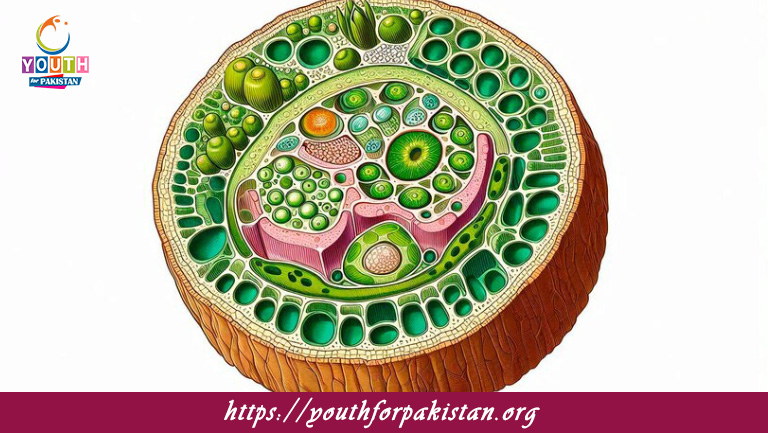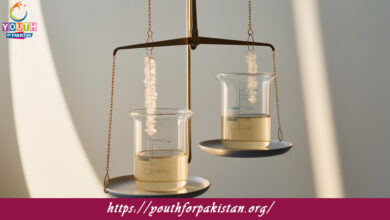Cell Wall MDCAT MCQs with Answers

Welcome to the Cell Wall MDCAT MCQs with Answers. In this post, we have shared Cell Wall Multiple Choice Questions and Answers for PMC MDCAT 2024. Each question in MDCAT Biology offers a chance to enhance your knowledge regarding Cell Wall MCQs in this MDCAT Online Test.
What is the primary component of plant cell walls?
a) Starch
b) Cellulose
c) Chitin
d) Glycogen
Which type of organism has a cell wall made of chitin?
a) Plants
b) Fungi
c) Bacteria
d) Animals
In bacteria, what is the cell wall composed of?
a) Chitin
b) Cellulose
c) Peptidoglycan
d) Glycoproteins
The cell wall provides which of the following functions?
a) Photosynthesis
b) Structural support and protection
c) Protein synthesis
d) Energy storage
Which of the following organisms lack a cell wall?
a) Bacteria
b) Fungi
c) Animals
d) Plants
Which layer of the plant cell wall is deposited first during cell wall formation?
a) Secondary cell wall
b) Middle lamella
c) Primary cell wall
d) Plasmodesmata
The middle lamella in plant cells is primarily composed of which substance?
a) Cellulose
b) Pectin
c) Lignin
d) Chitin
Which structure allows for communication and transport between adjacent plant cells?
a) Cell membrane
b) Plasmodesmata
c) Golgi bodies
d) Lysosomes
In woody plants, the secondary cell wall contains large amounts of which substance?
a) Lignin
b) Cellulose
c) Hemicellulose
d) Chitin
What is the role of the secondary cell wall in plants?
a) Photosynthesis
b) Structural support
c) Protein synthesis
d) DNA replication
Which polysaccharide is a major component of the fungal cell wall?
a) Chitin
b) Starch
c) Glycogen
d) Cellulose
Which of the following is a characteristic feature of plant cell walls but not animal cells?
a) Plasma membrane
b) Cytoplasm
c) Cell wall
d) Mitochondria
Which enzyme breaks down the bacterial cell wall?
a) Amylase
b) Protease
c) Lysozyme
d) Lactase
In bacteria, Gram-positive cells have a thick layer of what substance in their cell walls?
a) Lipids
b) Peptidoglycan
c) Cellulose
d) Glycoproteins
Which structure contributes to the rigidity of the plant cell wall?
a) Proteins
b) Cellulose microfibrils
c) Phospholipids
d) Glycoproteins
Which substance is commonly found in the middle lamella of plant cells and acts as a glue to hold cells together?
a) Hemicellulose
b) Pectin
c) Chitin
d) Lignin
Which of the following organisms have a cell wall composed of cellulose?
a) Animals
b) Bacteria
c) Plants
d) Fungi
What is the main difference between the cell walls of Gram-positive and Gram-negative bacteria?
a) Presence of a nucleus
b) Thickness of the peptidoglycan layer
c) Presence of mitochondria
d) Amount of DNA
Which of the following does not have a cell wall?
a) Bacteria
b) Fungi
c) Algae
d) Animal cells
Which of the following is absent in the cell wall of plant cells?
a) Plasmodesmata
b) Cellulose
c) Chitin
d) Pectin
In plants, what is the function of the middle lamella?
a) Photosynthesis
b) DNA replication
c) Cell adhesion
d) Protein synthesis
What is the primary component of the cell wall in algae?
a) Cellulose
b) Chitin
c) Lignin
d) Glycogen
Which of the following organisms has a cell wall made primarily of peptidoglycan?
a) Plants
b) Animals
c) Fungi
d) Bacteria
Which plant cell structure is continuous with the endoplasmic reticulum of adjacent cells through the plasmodesmata?
a) Cytoplasm
b) Golgi apparatus
c) Cell wall
d) Mitochondria
Which of the following structures is responsible for preventing the over-expansion of plant cells when water enters?
a) Cell membrane
b) Cell wall
c) Mitochondria
d) Ribosomes
What substance is found in the cell walls of diatoms?
a) Calcium carbonate
b) Silica
c) Cellulose
d) Chitin
Which plant organelle works with the cell wall to control turgor pressure?
a) Lysosome
b) Chloroplast
c) Central vacuole
d) Ribosome
Which of the following is involved in the synthesis of plant cell walls?
a) Chloroplasts
b) Mitochondria
c) Golgi apparatus
d) Ribosomes
The cell walls of Gram-negative bacteria contain which additional outer layer?
a) Capsule
b) Lipopolysaccharide
c) Glycoprotein
d) Chitin
What allows adjacent plant cells to exchange materials?
a) Nuclear pores
b) Endoplasmic reticulum
c) Plasmodesmata
d) Mitochondria
Which type of bacteria has a thinner peptidoglycan layer but a more complex outer membrane?
a) Gram-positive bacteria
b) Gram-negative bacteria
c) Cyanobacteria
d) Acid-fast bacteria
Which enzyme can break down the cell walls of fungi?
a) Amylase
b) Chitinase
c) Protease
d) Lysozyme
The primary cell wall of plants is mainly composed of what?
a) Proteins
b) Cellulose
c) Lipids
d) DNA
What role does lignin play in the plant cell wall?
a) Enzyme activity
b) Structural reinforcement
c) Transport of nutrients
d) Photosynthesis
In bacteria, the cell wall prevents what from occurring?
a) Protein synthesis
b) Osmotic lysis
c) DNA replication
d) Photosynthesis
Which layer of the bacterial cell wall is involved in staining during the Gram stain process?
a) Outer membrane
b) Plasma membrane
c) Peptidoglycan layer
d) Nucleus
Which of the following processes occurs in the cell wall of bacteria?
a) Energy production
b) Binary fission
c) Protein synthesis
d) Nutrient transport
The rigidity of bacterial cell walls is due to the presence of what?
a) Starch
b) Cellulose
c) Peptidoglycan
d) Glycogen
What is the role of the cell wall in protecting bacteria from their environment?
a) It aids in nutrient absorption
b) It maintains osmotic balance
c) It protects from phagocytosis
d) It synthesizes proteins
If you are interested to enhance your knowledge regarding Physics, Chemistry, Computer, and Biology please click on the link of each category, you will be redirected to dedicated website for each category.





